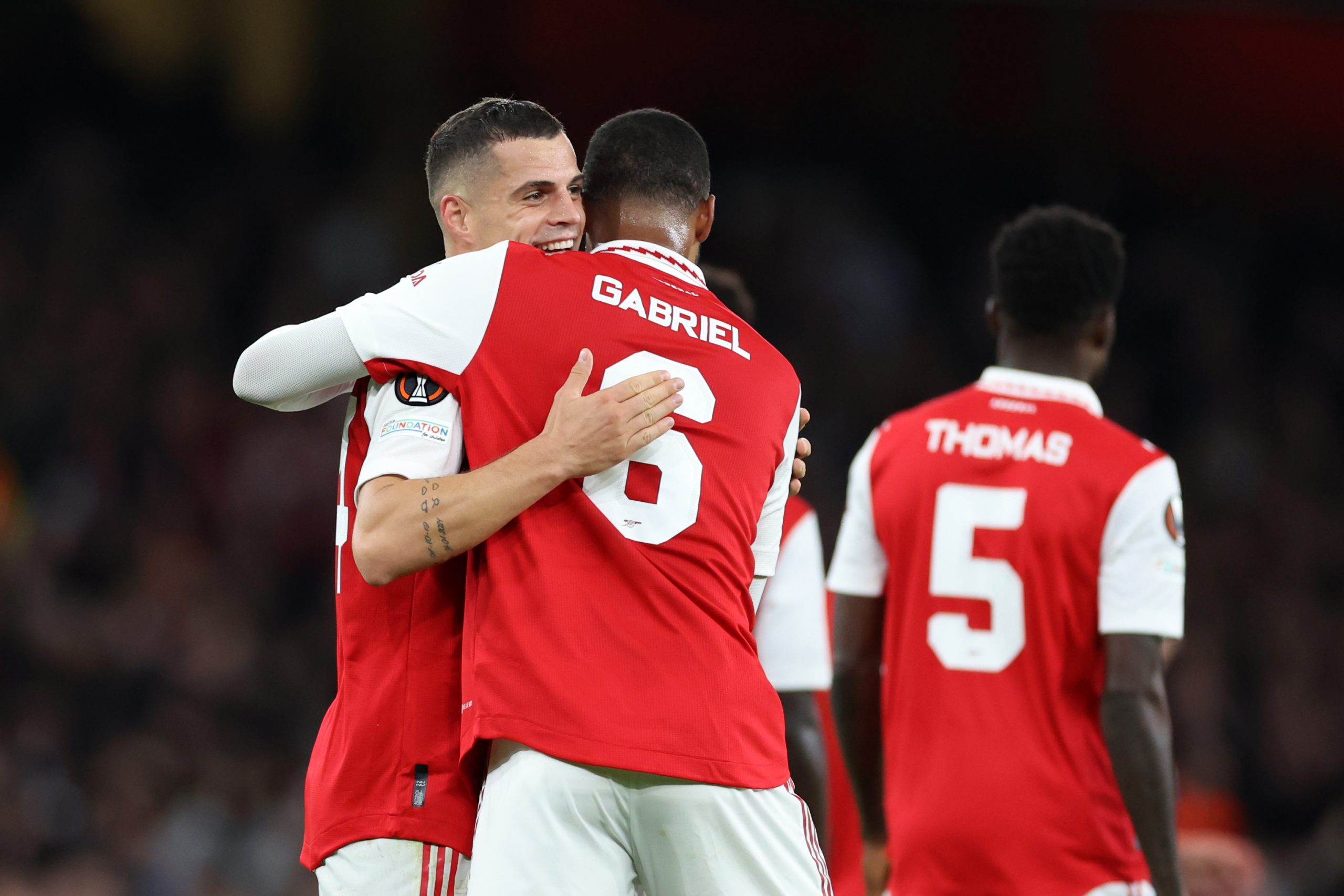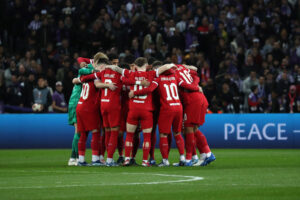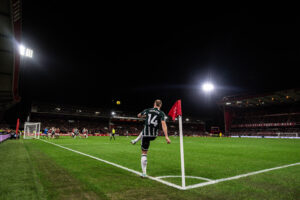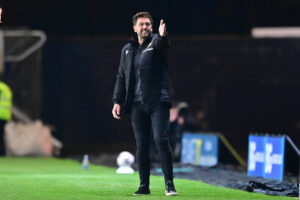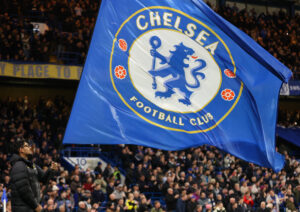It was once the most celebrated scoreline in football, so much so that it was put into song (to the tune of the Pet Shop Boys’ “Go West”): “One-Nil To The Arsenal”. However, it has not been sung nearly as much in recent years, as a succession of brittle defences under late-era Arsène Wenger, Unai Emery and early-era Mikel Arteta continually proved themselves incapable of keeping a clean sheet. But against PSV Eindhoven in the Europa League, Arsenal made it a hat-trick of 1-0 wins in a week to provide growing proof that Arteta is finally building a backline worthy of Arsenal‘s glorious defensive past.
A Defensive History of Arsenal
Four games. Four wins. ✊ pic.twitter.com/0oBQT4mLoN
— Arsenal (@Arsenal) October 20, 2022
Solidity
As Arteta’s Gunners made it a remarkable 13 wins out of 14 this season in the Premier League and the Europa League, an almost equally impressive statistic is that they have achieved seven clean sheets in those 14 games. Not to have conceded even a single goal in half the games they have played so far is a testament to the impressive strides that Arsenal have made as a defensive team.
Of course, for most of their history Arsenal were so celebrated as English football’s masters of defence that they were often called “Boring Arsenal”. In the 1930s, when there were only two points for a win, Herbert Chapman famously instructed his side to earn at least a point from every game, particularly every away game. And that defensive bedrock long outlived Chapman, who tragically died of pneumonia (contracted while watching a reserves game in the rain) in January 1934 when the Arsenal side he had constructed were on the verge of completing a hat-trick of English titles.
Read More: Arsenal Dealt Blow as Target Signs New Contract
The type of defensive solidity that Chapman emphasised underlay almost every successful Arsenal side that followed, with Joe Mercer exhibiting teak-like toughness in the 1948 and 1953 title-winning teams and Frank McClintock proving a proto-Tony Adams in the double-winning side of 1971. And under George Graham, Arsenal had probably the most famous and celebrated back four in post-war English football, so much so that screenwriter Simon Beaufoy could have his strippers mimic it in The Full Monty and be fully confident that everyone (or at least everyone in England) would get the joke.
Indeed, so enduring were the foundations that Graham built that Arsène Wenger relied on them for his first double-winning side in 1998 and even four years later when Wenger won another double, half of that back four – Tony Adams and Lee Dixon – were still invaluable squad members.
From Boring Arsenal to Scoring Arsenal Under Wenger
It was only after Adams, Dixon and Martin Keown (the ‘fifth’ member of that famous back four, who had eventually replaced Steve Bould alongside Adams in central defence) finally retired that it became apparent how much defensive nous had left with them. For all that Sol Campbell was an inspired signing who provided the defensive strength and speed to shore up the attacking abilities of Vieira, Pires, Henry et al, Wenger never really built an outstanding defence of his own. And when Campbell surprisingly quit the Gunners in 2006, ostensibly to go and play in Europe but in reality to move to Portsmouth, Arsenal struggled defensively for the next decade and beyond.
Read More: Arsenal Could Sign a Midfielder in January
It is often said that the main reason that Wenger’s Arsenal never won the Champions League was that the team’s primary playmaker, Dennis Bergkamp, was the “Non-Flying Dutchman”, whose aerophobia ruled him out of the majority of Arsenal’s away games in the competition. In turn, that inevitably disrupted the side that purred so smoothly when he was in it. However, it is arguable that an equal contributing factor was Wenger’s lack of attention to defence. After he left the club, Tony Adams famously bemoaned Wenger’s inability to coach defenders and it is certainly true that for all the outstanding attacking talent that Wenger discovered and then developed, from George Weah to Nicolas Anelka to Thierry Henry, the only defender of comparable status who he nurtured was Lilian Thuram when he was at Monaco early in his career.
Can Arteta Combine Wengerball and Grahamball?
During the long, slow and painful decade-plus of decline that marked the end of Wenger’s time with the Gunners, some older Arsenal fans speculated whether a role could possibly be found for George Graham, their previous manager, as a specialist defensive coach, à la American football, to shore up the team’s increasingly shaky rearguard. However, in addition to the fact that it was always highly unlikely that two such alpha-male managers as Wenger and Graham could ever have worked together, Graham never expressed any interest in returning to football after the end of his ill-fated time at Spurs, which he later admitted he had entered into largely to get back at Arsenal for sacking him. Now, however, more than two decades on, it is just possible that Mikel Arteta might be able to combine the best elements of both Wenger and Graham in his own evolving Arsenal side.
In building such a young, cohesive and above all physically powerful team this season, as epitomised by the new spine of William Saliba, Thomas Partey and Gabriel Jesus (who may not be very tall but is undeniably hard to push off the ball), Arteta has evoked memories of Wengerball, the truly revolutionary style of football, combining perfect technique with physical prowess, that was the hallmark of his best early sides. But in rebuilding Arsenal’s defence after more than a decade of relative decline, Arteta is also showing that he is capable of resorting to the George Graham playbook, even if, unlike Wenger, he never played under the Scot. The three 1-0 wins in the last week, added to the four previous clean sheets that Arsenal had already achieved this season, show that he values both attacking flair and defensive solidity.
Is Erling Haaland the Iceberg on the Horizon?
Of course, because the home match against PSV had to be rearranged, Arsenal have not already faced Manchester City and in particular Erling Haaland, the one-man wrecking ball who has laid waste to so many Premier League defences this season. After his spectacular start to the season, which included three successive hat-tricks in his first three Premier League home games, Haaland had begun to appear unstoppable. However, last weekend Liverpool again proved that he could be stopped, even if they required the assistance of VAR to do so, having also shut him out in the Community Shield match at the start of the season.
Liverpool’s victory was not only good for their own faltering title hopes but for the rest of English football, including Arsenal, the current Premier League leaders. It showed that neither City nor Haaland are unbeatable, so long as you have the kind of commanding centre-backs that Liverpool possess in Virgil van Dijk and Joe Gomez. Now, under Arteta, Arsenal have such solid, dominating central defenders of their own in Saliba and Gabriel, not to mention the centre-backs they have in reserve in Ben White, Rob Holding and even Takehiro Tomiyasu. It might take two of them to stop Haaland, with a third centre-back sweeping up behind, but if they can do it Arsenal will finally have regained the defensive crown that was theirs for so long.


